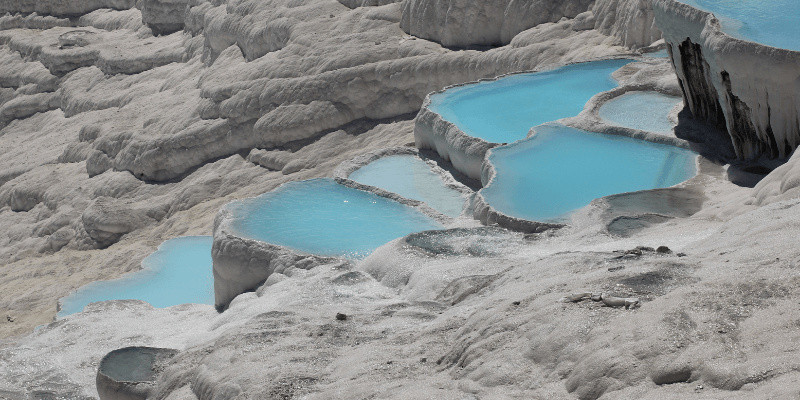
Travertine terraces typically refer to geological formations created by the deposition of calcium carbonate minerals from flowing water. One of the most famous examples of travertine terraces is Pamukkale in Turkey. Here's a simplified overview:
Key Features:
Calcium-Rich Springs: Travertine terraces are formed when water from underground springs, rich in dissolved calcium carbonate, reaches the Earth's surface.
Deposition Process: As the water emerges, the carbon dioxide is released into the air, leading to the precipitation of calcium carbonate. This process forms solid deposits that build up over time, creating terraced structures.
White and Limestone Appearance: The deposited minerals give the terraces a distinctive white or light-colored appearance, resembling a cascade of frozen water.
Unique Texture: The surface of travertine terraces often has a unique texture, with pools of water collected in natural basins between the steps.
Pamukkale, Turkey: Pamukkale, meaning "cotton castle" in Turkish, is a famous location known for its travertine terraces. Visitors can walk on the terraces, experiencing the natural pools and enjoying the scenic beauty.
Visiting Tips:
Footwear: Wear comfortable and slip-resistant footwear, as the travertine terraces can be slippery.
Conservation: To preserve the natural beauty, some areas might have restrictions on walking or require visitors to remove their shoes.
Bathing Areas: In places like Pamukkale, there are designated areas where visitors can bathe in the warm, mineral-rich waters.
Camera: Bring a camera to capture the unique landscapes and the contrast of white terraces against the surroundings.
Travertine terraces are not only geological wonders but also provide opportunities for relaxation and appreciation of the earth's natural processes. Pamukkale, with its iconic terraces, stands as a testament to the beauty created by the interaction of water and minerals over time.




